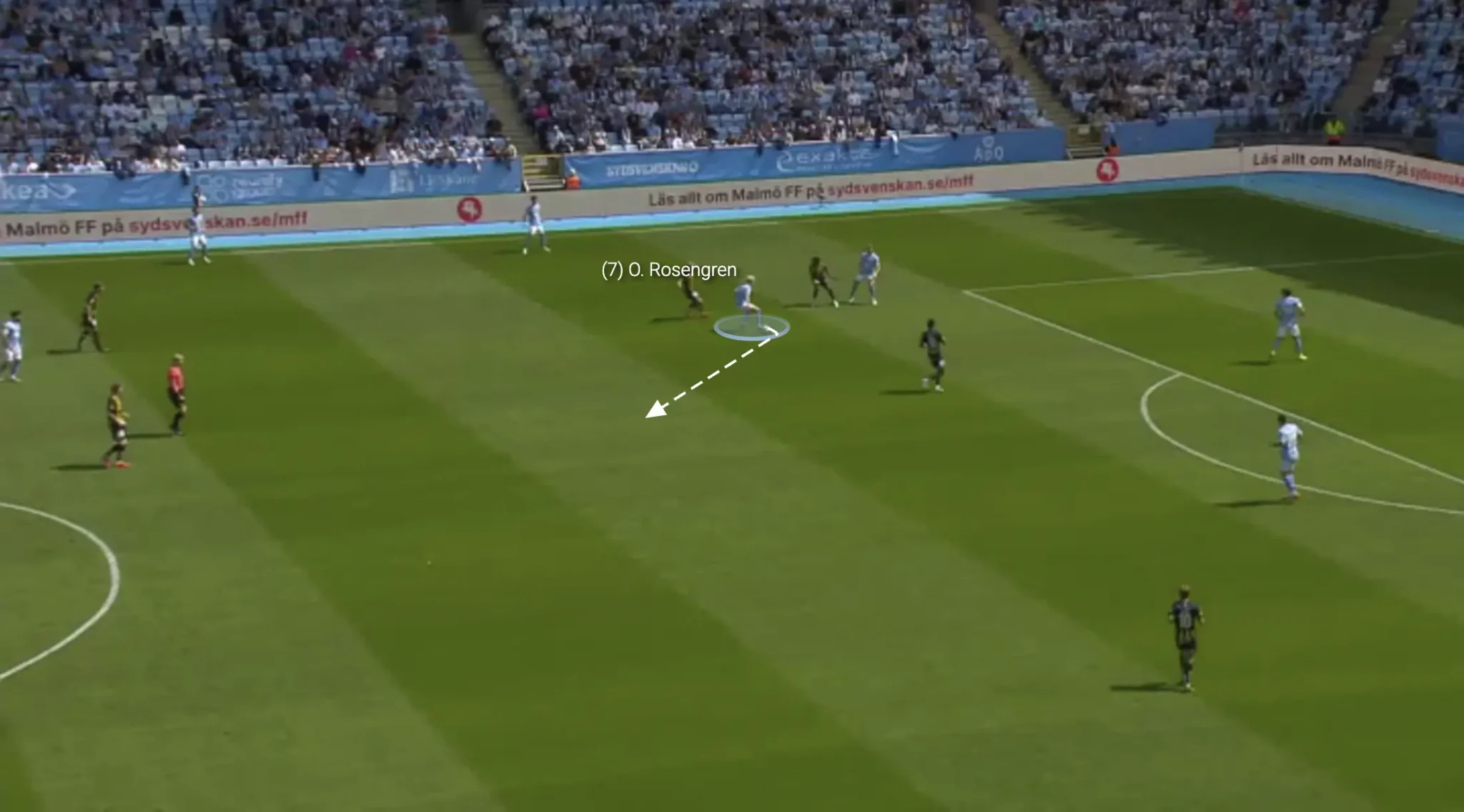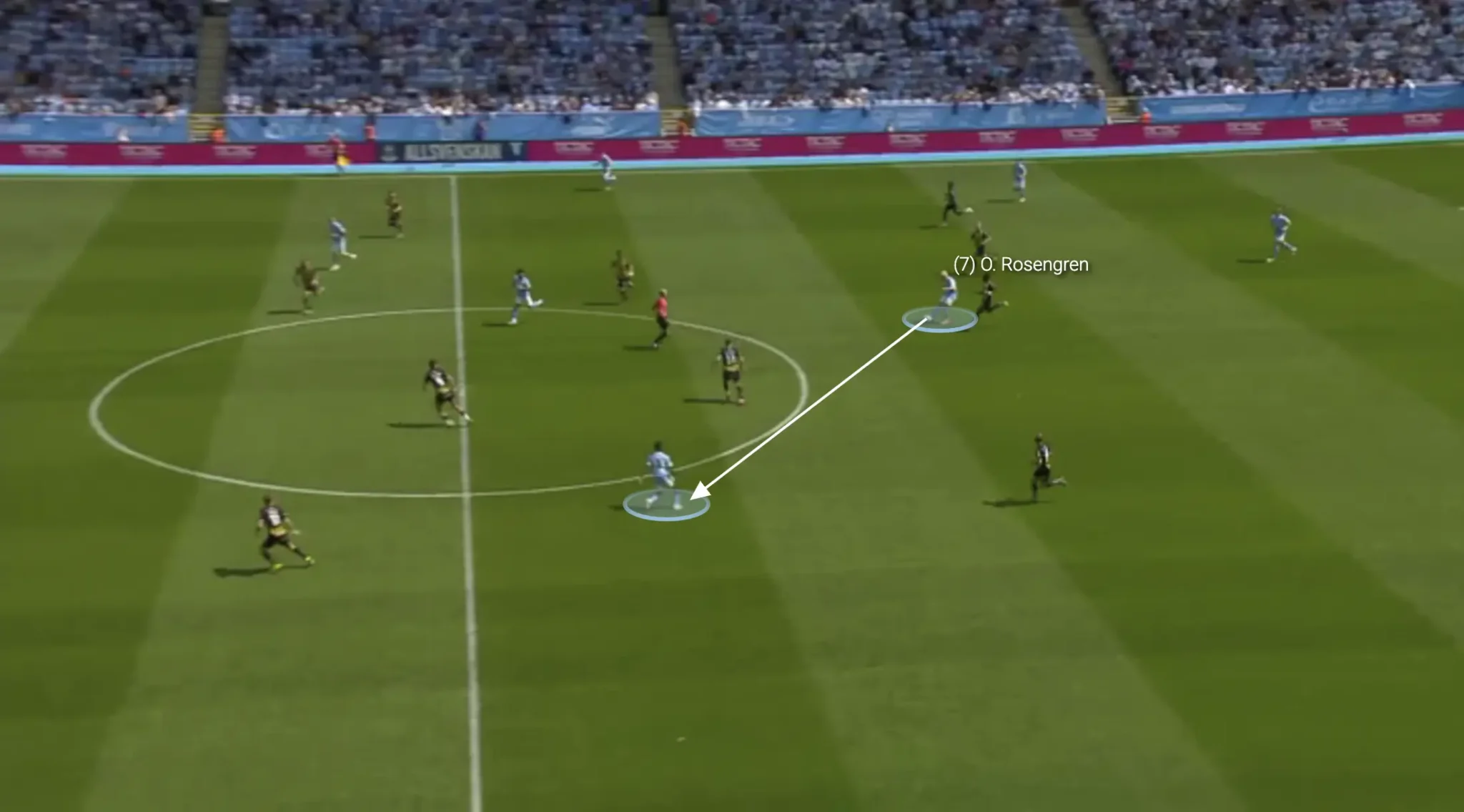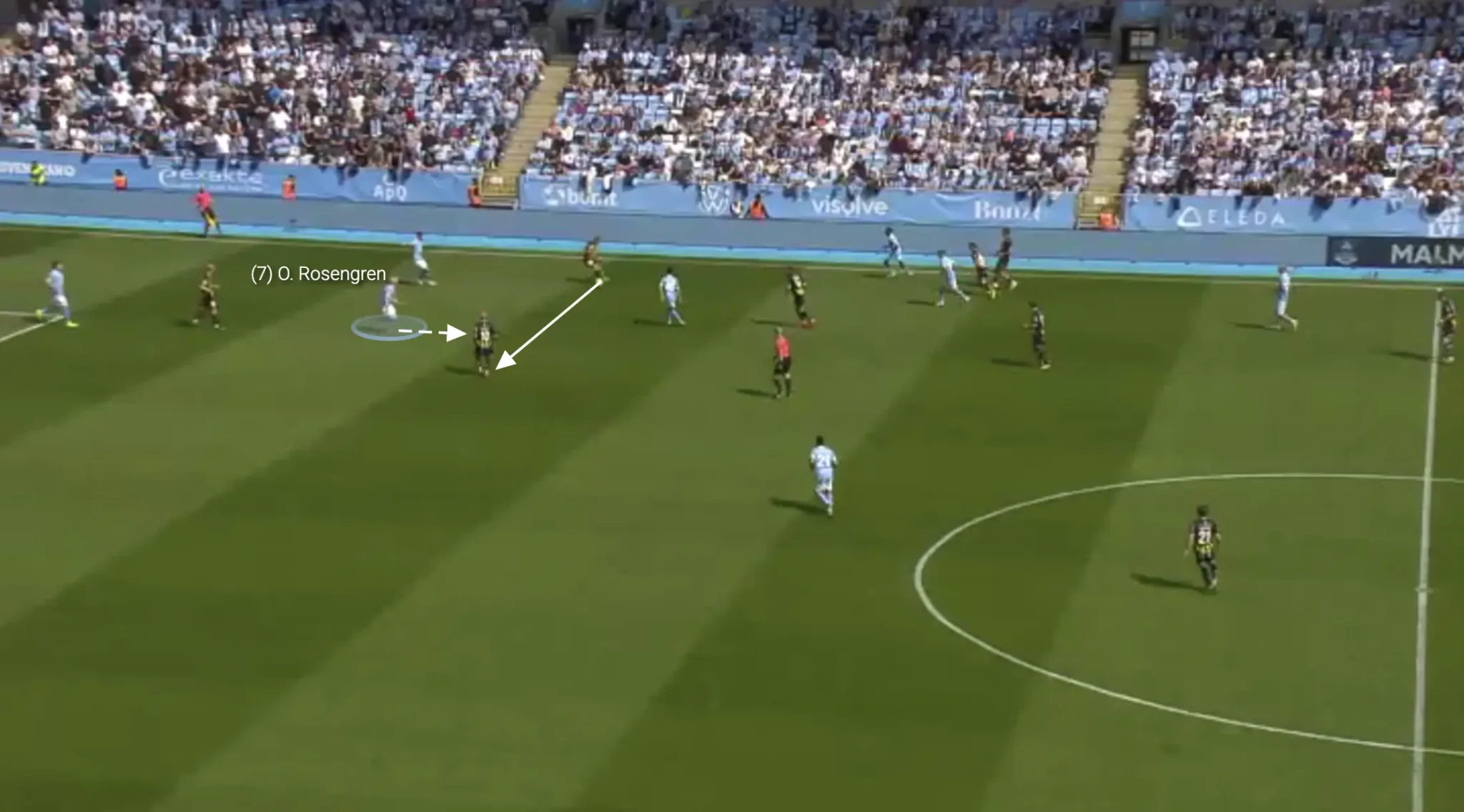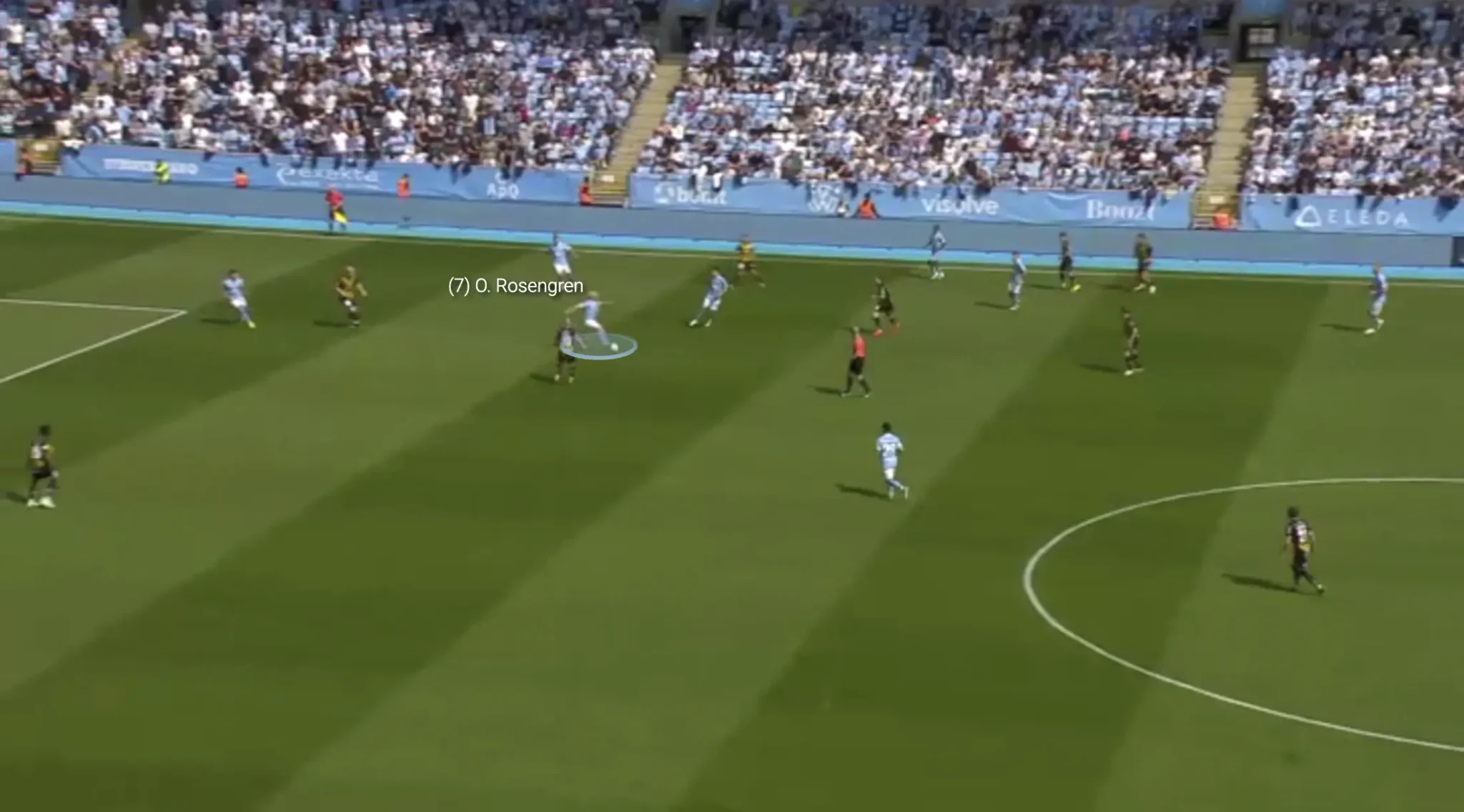Otto Rosengren doesn’t chase the spotlight — but his game commands respect. Calm under pressure, sharp in his positioning, and relentless between the lines, he brings control and clarity to every midfield he anchors. At just 22, he’s already made 71 appearances for Malmö FF, contributed to their 2023 and 2024 Allsvenskan titles, and earned his first Sweden cap in 2024.
With clubs like Como showing interest, it’s the right moment to break down what makes Rosengren such a smart and system-friendly talent — and why his game may translate well abroad.
Background
Born in Kalmar and developed in the small-town clubs of southern Sweden, Rosengren progressed through Sölvesborgs GIF and then Mjällby AIF, making his Allsvenskan debut in 2021 as a teenager. From his earliest minutes at senior level, coaches recognized his sharp decision-making, composure under pressure, and willingness to shoulder responsibility despite his age.
In 2023, Malmö FF secured his signature for a reported SEK 15 million — a significant domestic fee that underlined their belief in his potential. Within months, he had carved out a regular role in Henrik Rydström’s possession-heavy setup and became an essential cog in Malmö’s title-winning side.
The Player Profile: What Rosengren Does So Well
Rosengren operates primarily as a central midfielder — often as a left-sided No. 8 or in a double pivot. His playing style is all about tempo, positioning, and clarity. He supports build-up play by constantly offering himself between the lines, adjusts his positioning based on the ball’s location, and rarely forces the issue. His first touch is economical. His passing is clean. And he plays with an urgency that rarely spills into recklessness.


Rather than relying on power or flair, Rosengren dictates the game through timing. Moving before opponents can react, he positions his body to enable forward play and consistently spots overloads to shift possession with two-touch precision. Arguably his greatest strength is his off-the-ball movement — constantly available, spatially aware, and thinking one step ahead.
Though not known for creative flair, he understands when to risk a through ball, when to recycle possession, and when to step into half-spaces to support the next action. He’s not a player who racks up assists or dazzles with long passes, but his link play and spatial awareness are high-level.
Off the Ball: Disciplined, Diligent, and Durable
Rosengren brings just as much value without the ball. He presses with timing, shows discipline in rest-defence, and rarely gets caught out of position. While he’s not particularly physical, he doesn’t shy away from duels. His low center of gravity and quick reactions allow him to step in and disrupt build-up without diving in.
When defending transitions, he accelerates quickly to recover ground or fill space behind more adventurous teammates. He also shows maturity in his positioning when his team has the ball high up the pitch — often staying connected to the midfield line to guard against counter-attacks.
Even in a more aggressive pressing system, Rosengren’s ability to anticipate danger, cover ground, and make calculated defensive movements would serve him well. He doesn’t need to win every duel to be effective — he reads the play and acts early.


Limitations — and Why They’re Manageable
Rosengren is not the most dynamic ball-carrier. He won’t beat two men with a dribble, and he won’t turn into a final-third playmaker overnight. He prefers short passes over switches, safety over spectacle, and tends to remain just outside the final action. As a result, he doesn’t pose much of a goal threat — five goals in 71 games tells that story. His shooting is decent from range, but he rarely gets into the box or creates separation in tight spaces to let shots fly.
Physically, he’s not imposing in aerial duels, and he’s not a player who dominates with size or strength. These are limitations — but not critical ones, especially for clubs looking for intelligence, rhythm, and clean execution over raw power.
He also isn’t the kind of player who will carry an attack by himself. His value comes from what he enables: faster progression, better structure, smarter pressing triggers, and a midfield unit that works in sync.
How He Projects Abroad
Rosengren’s strengths translate best into leagues that value tactical structure and short-passing combinations — Serie A, the Eredivisie, or even Belgium’s Pro League come to mind. A club like Como, recently promoted and investing ambitiously, could offer him the perfect stepping stone: a system that asks its midfielders to think clearly, protect possession, and cover space without constant chaos.
In Italy, his positional awareness and grasp of rest-defence principles could truly stand out. In the Netherlands, teams would value his ability to operate within triangles and control the tempo. He’s not suited to high-duel, transition-heavy systems, but placed in the right context, he has the potential to become a highly effective starter — one who enhances both team structure and in-possession fluency.
He also fits perfectly at clubs aiming to build sustainable identities around technically intelligent players who contribute even without direct involvement in goals or assists.
Scout Verdict
Otto Rosengren won’t trend on social media — but he’ll win you matches. He’s a connector, a tempo-setter, a player who makes teammates better. His intelligence, movement, and decision-making place him in the mold of a modern, European-style central midfielder. Coaches trust him because he simplifies the game — not by playing safe, but by playing smart.
At 22, with a league title and over 70 top-flight games to his name, he’s ready to test himself at a higher level. In a league that values tactical maturity and possession control, Rosengren won’t just adapt — he’ll quietly become one of its most dependable midfielders.
This scouting report is written by Harry Kruusval, a Swedish football scout and part of the 360 Scouting team.
